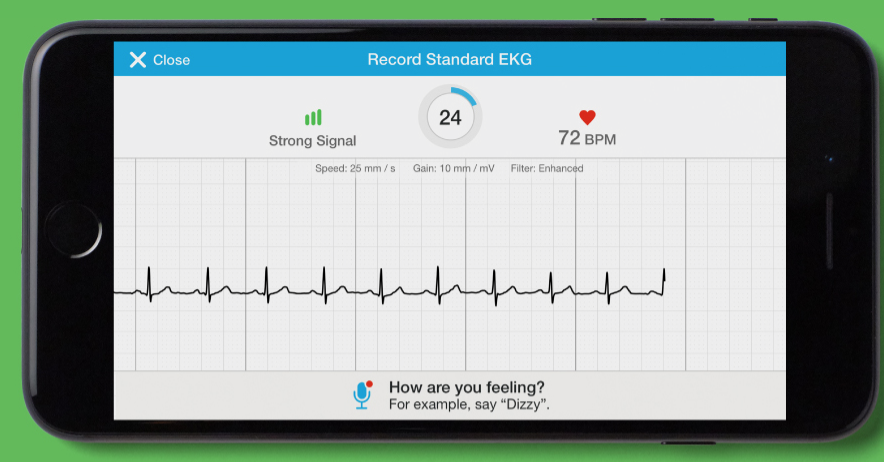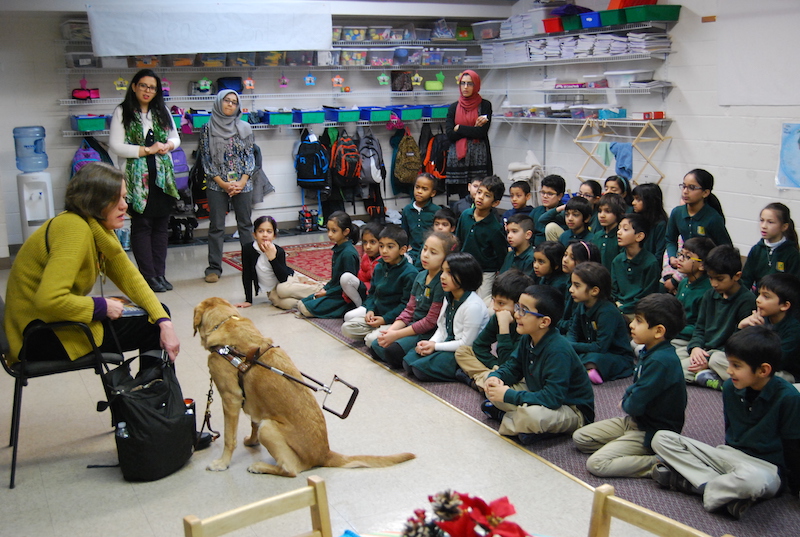Mondays with Mike: Far and away
January 23, 2017 • 5 Comments • Posted in Mike Knezovich, Mondays with Mike, travel, Uncategorized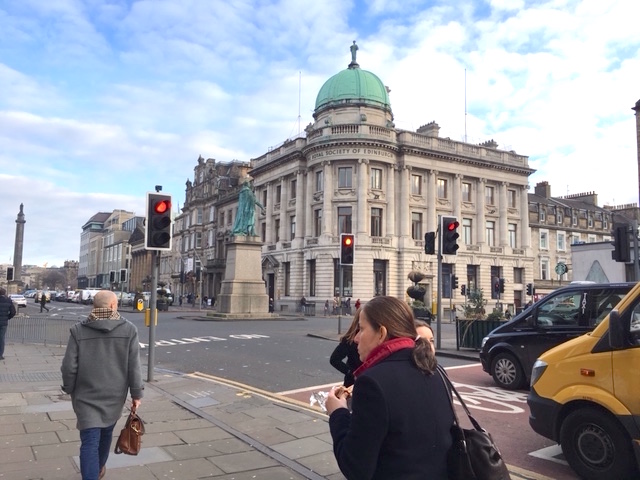
The weather has been, all things considered, very pleasant.
Greetings from the land of towel warmers and biscuits. It’s gloriously sunny and only a little brisk in Edinburgh, Scotland. We’re a few steps downstairs at a little café drinking some potent black coffee, eating croissant and a bacon and cheese scone. We found it after being directed to a Starbuck’s just across the street—we chose wisely.
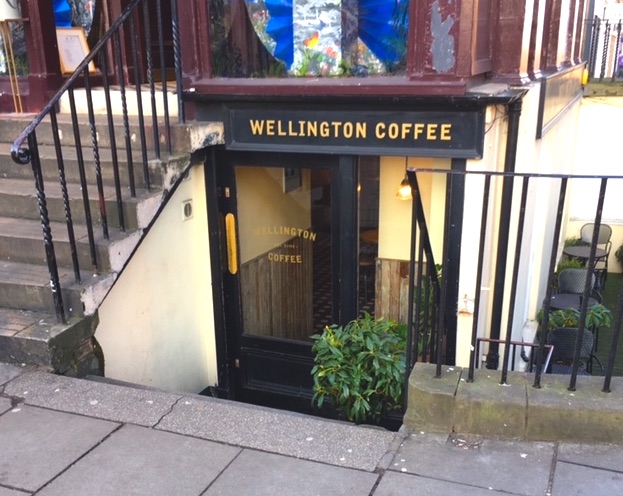
Wellington Coffee, our little slice of caffeine heaven.
Last night we stopped at The Oxford Bar, the spot frequented by the fictional detective Inspector John Rebus in the entertaining series of mysteries by Edinburgh’s own Ian Rankin. Rankin has penned his thoughts about the real-life tavern.
Oxford Bar was all that. Or, I should say, it wasn’t all that. It was quiet. Civilized. It acknowledges its Rebus connection, but this is no Maragaritaville. It’s still just a pub.
The conversation was rich. Bartender George and Harry the patron were deep into talks about music. George used to play in a band full-time back in the 70s and 80s, and he’d taken up music again for fun. Business was at a civilized pace and between patrons, and between serving patrons, Harry reviewed the lyrics of Whiter Shade of Pale, which his present-time band had added to its repertoire. All of us found lots of common ground in our awe of songwriters, including Carole King, whom Harry absolutely revered.
Later we visited with Fiona and John and their two handsome sons, Andrew and Douglas. You may remember that Fiona is the sister of Sheelagh, our longtime friend who died from cancer several years ago. Fiona visited us last year. We are lucky to remain connected. We had a lovely evening, starting at a grand and traditional pub called Bennett’s, followed by dinner at Fiona and John’s.
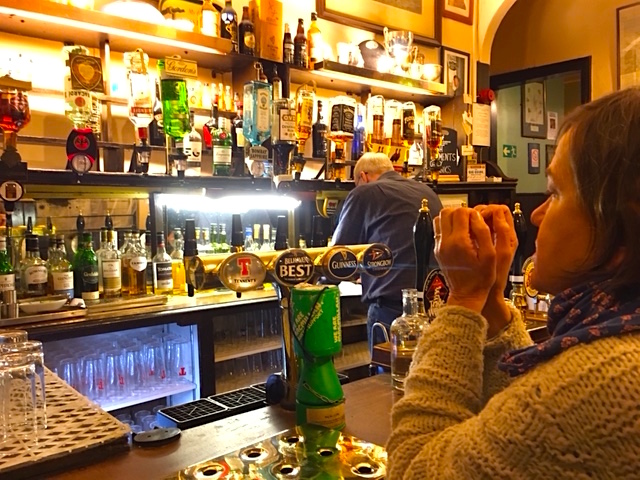
George the bartender reviews lyrics while Beth and I enjoy a pint.
Throughout our journey, conversation has inevitably turned toward our current president. What was striking is how well informed our UK friends are. For example, back at The Oxford Bar, Harry and George knew the intricacies of our three-headed system, and held out hope that it would insulate us and them from catastrophe. They also knew our election cycle: “It’ll be better in two years,” said Harry, hopeful for the prospect of a Congressional turnover in the wake of two years of expected nuttiness.
Before heading to Scotland, we spent three days with our friend Jim Neill at his London flat. We were in his living room on inauguration day. Jim is a political junkie and he and I watched the ceremony on BBC television while Beth sequestered herself for a nap.
For the record, things back in the USA don’t look a lot better from across the pond. (Also for the record, Jim immediately commented on how less-crowded the mall seemed compared to what he had remembered from previous inaugurations.)
An American should be reminded that, for better or worse, we have carved out a primary and incontrovertibly important (as opposed to “alternate”) role in world affairs. These people in the UK are dealing with two unnerving developments: Brexit and a president that to them appears to be at a developmental level somewhere between high school senior and college sophomore.
Our time with Jim included a visit to his father’s home in Hartlepool, located in a region that the Motorway signs label simply as The North. Hartlepool was once a shipbuilding power, but went through the same kind of hollowing out during economic transitions that our so-called rustbelt cities of the USA did.
Hartlepool is also a long, long way from London—not so much in distance as culture. Our talks with people along our journey confirmed that some things are universal. For one, the urban/non-urban divide. We have a good friend, Lydia, who immigrated north (and I really think that’s the best term) to Chicago from the South to the chagrin of her family. They routinely and painfully referred to Lydia’s adopted home as That Chicago. Someone spoke to us and used the phrase That London in much the same way Lydia’s parents used That Chicago.
We stayed overnight at Jim’s father’s house. Jack is a hale octogenarian who walked us at a remarkable pace to the house of Carol and Phillip, his daughter and son-in-law who live about a 10 minute stroll away.
Our hosts served wine and finger food and we didn’t have to work hard to coax his father and sister into telling embarrassing stories from Jim’s childhood. We also got to know Carol and Phillip’s youngest daughter, and learned about their son who is working in London, and their other daughter, a student at university.
At some point, Phillip recalled his time as a teenager in the Navy, when a few of his ports of call included American stops. Out of the blue, as he gazed off in his own imagination, he said, softly but firmly, “I love America.”
I wasn’t sure I’d heard him correctly and asked him to repeat it. He went on to tell stories about his times in the USA, stories that his daughter hadn’t heard and which opened her eyes to the idea that her father had not always been her father.
Phillip recalled one stop in Norfolk, Virginia, where his British aircraft carrier moored next to the U.S.S. Nimitz. “Our ship was the biggest in our navy, and the Nimitz was twice as large!” More than that, though, he was impressed by the kindness of the American families that met the Brits at the dock to offer them housing or any help they needed during their stay. Norfolk’s residents know what it is to have loved ones at sea for extended periods.
Mostly, I’ve stayed away from news sites and social media as much as possible. While we’re away, I’m taking a badly needed break. But I did see the reports about the marches around the world, in cities across the USA, and particularly, my Chicago friends’ social media dispatches. It was heartening, and I got the same feeling—strangely—that I’d had when we were stranded in New Orleans (how awful!) a few years ago because a huge snowstorm had shut down Chicago’s airports.
My first impulse: I wanted to be there, despite it all. It is home. All of it, good and bad.
Than again, a single-malt later, I realized I’ll be there soon enough.
See you then.

